Submitted:
09 August 2023
Posted:
10 August 2023
You are already at the latest version
Abstract
Keywords:
1. Introduction
2. Materials and Methods
3. Results
Relationship with the stroke
4. Discussion
5. Conclusions
- Shoulder pain is very common in Masters swimmers.
- Neck pain can be considered one of the typical pathologies of the swimmer.
- The prolonged internal rotation after the pulling phase and the bending attitude of the wrist in the recovery phase, seem to confirm to be predisposing factors of shoulder pain.
- The excessive body roll during breathing and the attitude of maintaining the extension of the neck during the stroke relate to neck pain.
- Swimmers with shoulder pain tend to reduce either the pulling or the recovery.
- There is an association between the volume of swim training and shoulder pain.
Supplementary Materials
Author Contributions
Funding
Institutional Review Board Statement
Informed Consent Statement
Data Availability Statement
Conflicts of Interest
References
- King, J.W.; Brelsford, H.J.; Tullos, HS. Analysis of the pitching arm of the professional baseball pitcher. Clin. Orthop. Relat. Res. 1969, 67, 116–123. [Google Scholar] [CrossRef]
- Chandler, J.T.; Kibler, B.W.; Uhl, T.L.; Wooten, B.; Kiser, A.; Stone, E. Flexibility comparisons of junior elite tennis players to other athletes. Am J Sports Med. 1990, 18, 134–136. [Google Scholar] [CrossRef] [PubMed]
- Brown, L.P.; Niehues, S.L.; Harrah, A.; Yavorsky, P.; Hirshman, H.P. Upper extremity range of motion and isokinetic strength of the internal and external rotators in major league pitchers. Am J Sports Med. 1988, 16, 577–585. [Google Scholar] [CrossRef] [PubMed]
- Bigliani, L.U.; Codd, T.P.; Connor, P.M.; Levine, W.N.; Littlefield, M.A.; Hershon, S.J. Shoulder motion and laxity in the professional baseball player. Am J Sports Med. 1997, 25, 609–613. [Google Scholar] [CrossRef] [PubMed]
- Johnson, L. Patterns of shoulder flexibility among college baseball players. J Athl Train 1992, 27, 44–49. [Google Scholar] [PubMed]
- Litner, D.; Mayol, M.; Uzodinma, O.; Jones, R.; Labossiere, D. Glenohumeral internal rotation deficits in professional pitchers enrolled in an internal rotation stretching program. Am J Sports Med 2007, 35, 617–621. [Google Scholar] [CrossRef] [PubMed]
- Ellenbecker, T.S.; Roetert, E.P.; Piorkowski, P.A.; Schulz, D.A. Glenohumeral joint internal and external rotation range of motion in elite junior tennis players. J Orthop Sports Phys Ther 1996, 24, 336–341. [Google Scholar] [CrossRef]
- Ellenbecker, T.S.; Roetert, E.P.; Bailie, D.S.; Davies, G.J.; Brown, S.W. Glenohumeral joint total range of motion in elite tennis players and baseball pitchers. Med Sci Sports Exerc 2009, 34, 2052–2056. [Google Scholar] [CrossRef]
- Torres, R.R.; Gomes, J.L. Measurement of Glenohumeral internal rotation in asymptomatic tennis players and swimmers. Am J Sports Med 2009, 37, 1017–1023. [Google Scholar] [CrossRef]
- Shanley, E.; Raugh, M.J.; Michener, L.A.; Ellenbecker, T.S.; Garrison, J.C.; Thigpen, C.A. Shoulder range of motion measures as risk factors for shoulder and elbow injuries in high school soft ball and baseball players. Am J Sports Med 2011, 39, 1997–2006. [Google Scholar] [CrossRef]
- Zaremski, J.L.; Zeppieri, G. Jr; Tripp, B.L. Mechanisms and treatments for shoulder injuries in overhead throwing athletes. J Athl Train 2019, 54, 1030–1039. [Google Scholar] [CrossRef] [PubMed]
- Pink, M.; Edelman, G.; Mark, R.; Rodeo, S. Applied Biomechanics of Swimming. In Athletic and sport issues in musculoskeletal rehabilitation; Elsevier Saunders: St Louis, Missouri, 2011; Chapter 14; pp. 331–349. [Google Scholar]
- Contreras Fernández, J.J.; Verdugo, R.L.; Feito, M.O.; Soza Rex, F. Shoulder pain in swimmers. Pain in perspective. Intech Open Science Open Minds 2012, 119–146. [Google Scholar] [CrossRef]
- Virag, B.; Hibberd, E.E.; Oyama, S.; Padua, D.A.; Myers, J.B. Prevalence of freestyle biomechanical errors in elite competitive swimmers. Sports Health 2014, 6, 218–24. [Google Scholar] [CrossRef] [PubMed]
- Heinlein, S.A.; Cosgarea, A.J. Biomechanical considerations in the competitive swimmer’s shoulder. Sports Health 2010, 2, 519–525. [Google Scholar] [CrossRef] [PubMed]
- Hidalgo-Lozano, A.; Calderón-Soto, C.; Domingo-Camara, A.; Fernández-de-Las-Peñas, C.; Madeleine, P.; Arroyo-Morales, M. Elite swimmers with unilateral shoulder pain demonstrate altered pattern of cervical muscle activation during a functional upper-limb task. J Orthop Sports Phys Ther 2012, 42, 552–558. [Google Scholar] [CrossRef]
- Atilla, H.; Akdogan, M.; Öztürk, A.; Ertan, M.B.; Kose, O. Musculoskeletal Injuries in Master Swimmers: A National Survey in Turkey. Cureus 2020, 3, e8421. [Google Scholar] [CrossRef]
- Guth, E.H. A Comparison of cervical rotation in age-matched adolescent competitive swimmers and healthy males. J Orthop Sport Phys Ther 1995, 21, 21–27. [Google Scholar] [CrossRef]
- Ferrell, M.C. The spine in swimming. Clin Sport Med 1999, 18, 389–393. [Google Scholar] [CrossRef]
- Feijen, S.; Tate, A.; Kuppens, K.; Claes, A.; Struyf, F. Swim-training volume and shoulder pain across the life span of the competitive swimmer: A systematic review. J Athl Train 2020, 55, 32–41. [Google Scholar] [CrossRef]
- Irick, E. Student-athlete participation 1981–82—2015–16. National Collegiate Athletic Association Web site. http://www.ncaapublications.com/productdownloads/PR1516.pdf. Published 2016. Accessed July 2023.
- Matzkin, E.; Suslavich, K.; Wes, D. Swimmer’s shoulder: Painful shoulder in the competitive swimmer. J Am Acad Orthop Surg 2016, 24, 527–536. [Google Scholar] [CrossRef]
- Walker, H.; Gabbe, B.; Wajswelner, H.; Blanch, P.; Bennell, K. Shoulder pain in swimmers: a 12-month prospective cohort study of incidence and risk factors. Phys Ther Sport 2012, 13, 243–249. [Google Scholar] [CrossRef] [PubMed]
- Moeda, F.; Melo, X.; Hatia, M.; Pinho, S.; Calado, D.; de Andrade, M.R.; Tomás, N.; Barbosa, J. Clinical and ultrasound findings of ‘swimmer’s shoulder’ and its association with training history in elite Portuguese swimmers: a cross-sectional study. Phys Sportsmed 2023, 15, 1–13. [Google Scholar] [CrossRef] [PubMed]
- Belilos, E.; Jow, S.; Maxwell, M. Descriptive epidemiology of high school swimming and diving injuries. Clin J Sport Med 2023. [Google Scholar] [CrossRef] [PubMed]
- Bales, J.; Bales, K. Swimming overuse injuries associated with triathlon training. Sports Med Arthrosc Rev 2012, 20, 196–199. [Google Scholar] [CrossRef] [PubMed]
- Tovin, B.J. Prevention and treatment of swimmer’s shoulder. N Am J Sports Phys Ther 2006, 1, 166–175. [Google Scholar]
- Welbeck, A.N.; Amilo, N.R.; Le, D.T.; Killelea, C.M.; Kirsch, A.N.; Zarzour, R.H.; Burgi, C.R.; Sell, T.C.; Faherty, M.S. Examining the link between thoracic rotation and scapular dyskinesis and shoulder pain amongst college swimmers. Phys Ther Sport 2019, 40, 78–84. [Google Scholar] [CrossRef]
- Dischler, J.D.; Baumer, T.G.; Finkelstein, E.; Siegal, D.S.; Bey, M.J. Association between years of competition and shoulder function in collegiate swimmers. Sports Health 2017, 10, 113–118. [Google Scholar] [CrossRef]
- Tessaro, M.; Granzotto, G.; Poser, A.; Plebani, G.; Rossi, A. Shoulder pain in competitive teenage swimmers and its prevention: a retrospective epidemiological cross sectional study of prevalence. IJSPT 2017, 12, 798–811. [Google Scholar]
- Wanivenhaus, F.; Fox, A.J.; Chaudhury, S.; Rodeo, SA. Epidemiology of injuries and prevention strategies in competitive swimmers. Sports Health 2012, 4, 246–251. [Google Scholar] [CrossRef]
- Tate, A.; Turner, G.N.; Knab, S.E.; Jorgensen, C.; Strittmatter, A.; Michener, L. Risk factors associated with shoulder pain and disability across the lifespan of competitive swimmers. J Athl Train 2012, 47, 149–158. [Google Scholar] [CrossRef]
- Wolf, B.R.; Ebinger, A.E.; Lawler, M.P.; Britton, C.L. Injury patterns in Division I collegiate swimming. Am J Sports Med 2009, 37, 2037–2042. [Google Scholar] [CrossRef] [PubMed]
- Matsuura, Y.; Matsunaga, N.; Akuzawa, H.; Oshikawa, T.; Kaneoka, K. Comparison of muscle coordination during front crawl and backstroke with and without swimmer’s shoulder pain. Sports Health 2023, 19417381231166957. [Google Scholar] [CrossRef] [PubMed]
- Mise, T.; Mitomi, Y.; Mouri, S.; Takayama, H.; Inoue, Y.; Inoue, M.; Akuzawa, H.; Kaneoka, K. Hypomobility in males and hypermobility in females are risk factors for shoulder pain among young swimmers. J Sport Rehabil 2022, 31, 17–23. [Google Scholar] [CrossRef]
- Feijen, S.; Struyf, T.; Kuppens, K.; Tate, A.; Struyf, F. Prediction of shoulder pain in youth competitive swimmers: The development and internal validation of a prognostic prediction model. Am J Sports Med 2021, 49, 154–161. [Google Scholar] [CrossRef] [PubMed]
- Krüger, P.E.; Dressler, A.; Botha, M. Incidence of shoulder injuries and related risk factors among master swimmers in South Africa. Afr J Phys Health Educ Recreat Dance 2012, 18 (Suppl. 1), 57–76. [Google Scholar]
- Stocker, D.; Pink, M.; Jobe, F.W. Comparison of shoulder injury in collegiate- and master’s-level swimmers. Clin J Sport Med 1995, 5, 4–8. [Google Scholar] [CrossRef]
- Thomas, S.J.; Blubello, A.; Peterson, A.; Blum, D.; Sarver, J.J.; Cobb, J.; Tate, A.R. Master swimmers with shoulder pain and disability have altered functional and structural measures. J Athl Train 2021, 56, 1313–1320. [Google Scholar] [CrossRef]
- Prien, A.; Mountjoy, M.; Miller, J.; Boyd, K.; van den Hoogenband, C.; Gerrard, D.; et al. Injury and illness in aquatic sport: how high is the risk? A comparison of results from three FINA world championships. Br J Sports Med 2017, 51, 277–282. [Google Scholar] [CrossRef]
- de Almeida, M.O.; Hespanhol, L.C.; Lopes, A.D. Prevalence of musculoskeletal pain among swimmers in an elite national tournament. Int J Sports Phys Ther 2015, 10, 1026–1034. [Google Scholar]
- Sein, M.L.; Walton, J.; Linklater, J.; et al. Shoulder pain in elite swimmers: primarily due to swim-volume–induced supraspinatus tendinopathy. Br J Sports Med 2010, 44, 105–113. [Google Scholar] [CrossRef]
- Yanai, T.; Hay, J.G. Shoulder impingement in front-crawl swimming: II. Analysis of stroking technique. Med Sci Sports Exerc 2000, 32, 30–40. [Google Scholar] [CrossRef]
- Allegrucci, M.; Whitney, S.L.; Irrgang, J.J. Clinical implications of secondary impingement of the shoulder in freestyle swimmers. J Orthop Sports Phys Ther 1994, 20, 307–318. [Google Scholar] [CrossRef]
- Souza, T.A. The Shoulder in Swimming. In: Souza TA. Sports injuries of the shoulder. Conservative Management. Churchill Livingstone Inc. 1994. pp 107-124.
- Pink, M.M.; Tibone, J.E. The painful shoulder in the swimming athlete. Orthop Clin North Am 2000, 31, 247–261. [Google Scholar] [CrossRef]
- Rodeo, S.A. Swimming. In: Krishnan SG, Hawkins RJ, Warren RF, eds. The Shoulder and the Overhead Athlete. Philadelphia, PA: Lippincott, Williams & Wilkins; 2004, 350.
- Rupp, S.; Berninger, K.; Hopf, T. Shoulder problems in high level swimmers: impingement, anterior instability, muscular imbalance? Int J Sports Med 1995, 16, 557–562. [Google Scholar] [CrossRef] [PubMed]
- Zemek, M.J.; Magee, D.J. Comparison of glenohumeral joint laxity in elite and recreational swimmers. Clin J Sport Med 1996, 6, 40–47. [Google Scholar] [CrossRef] [PubMed]
- Hidalgo-Lozano, A.; Calderón-Soto, C.; Domingo-Camara, A.; Fernández-de-Las-Peñas, C.; Madeleine, P.; Arroyo-Morales, M. Elite swimmers with unilateral shoulder pain demonstrate altered pattern of cervical muscle activation during a functional upper-limb task. J Orthop Sports Phys Ther 2012, 42, 552–558. [Google Scholar] [CrossRef] [PubMed]
- Tavares, N.; Dias, G.; Carvalho, P.; Vilas-Boas, J.P.; Castro, M.A. Effectiveness of therapeutic exercise in musculoskeletal risk factors related to swimmer’s shoulder. Eur J Investig Health Psychol Educ 2022, 2, 601–615. [Google Scholar] [CrossRef]
- Yoma, M.; Herrington, L.; Mackenzie, T.A. The effect of exercise therapy interventions on shoulder pain and musculoskeletal risk factors for shoulder pain in competitive swimmers: A scoping review. J Sport Rehabil 2022, 23, 617–628. [Google Scholar] [CrossRef]
- Machado, E.M.; Haik, M.N.; Ferreira, J.K.; da Silva Santos, J.F.; Camargo, P.R.; Mendonça, L.M. Association of trunk and lower limb factors with shoulder complaints and sport performance in overhead athletes: A systematic review including GRADE recommendations and meta-analysis. Phys Ther Sport 2023, 60, 112–131. [Google Scholar] [CrossRef]
- Lintner, D.; Noonan, T.J.; Ben Kibler, W. Injury patterns and biomechanics of the athlete’s shoulder. Clin Sports Med 2008, 27, 527–551. [Google Scholar] [CrossRef]
- Endo, Y.; Sakamoto, M. Correlation of shoulder and elbow injuries with muscle tightness, core stability, and balance by longitudinal measurements in junior high school baseball players. J Phys Ther Sci 2014, 26, 689e693. [Google Scholar] [CrossRef] [PubMed]
- Silfies, S.P.; Ebaugh, D.; Pontillo, M.; Butowicz, C.M. Critical review of the impact of core stability on upper extremity athletic injury and performance. Braz J Phys Ther 2015, 19, 360–368. [Google Scholar] [CrossRef] [PubMed]
- Wilk, K.E.; Arrigo, C.A.; Hooks, T.R.; Andrews, J.R. Rehabilitation of the overhead throwing athlete: There is more to it than just external rotation/internal rotation strengthening. PM&R 2016, 8 (Suppl. 3), 78–90. [Google Scholar] [CrossRef]
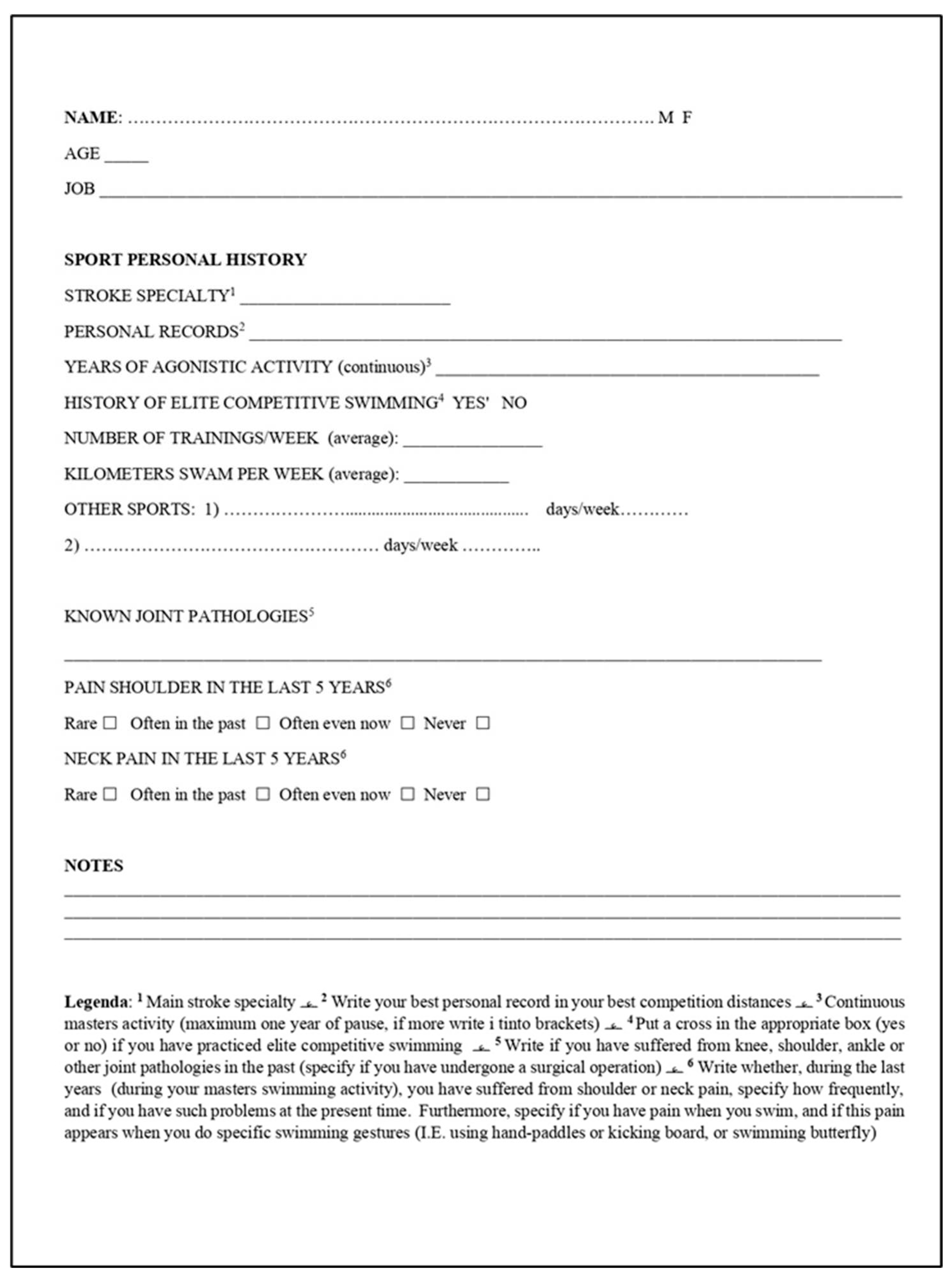
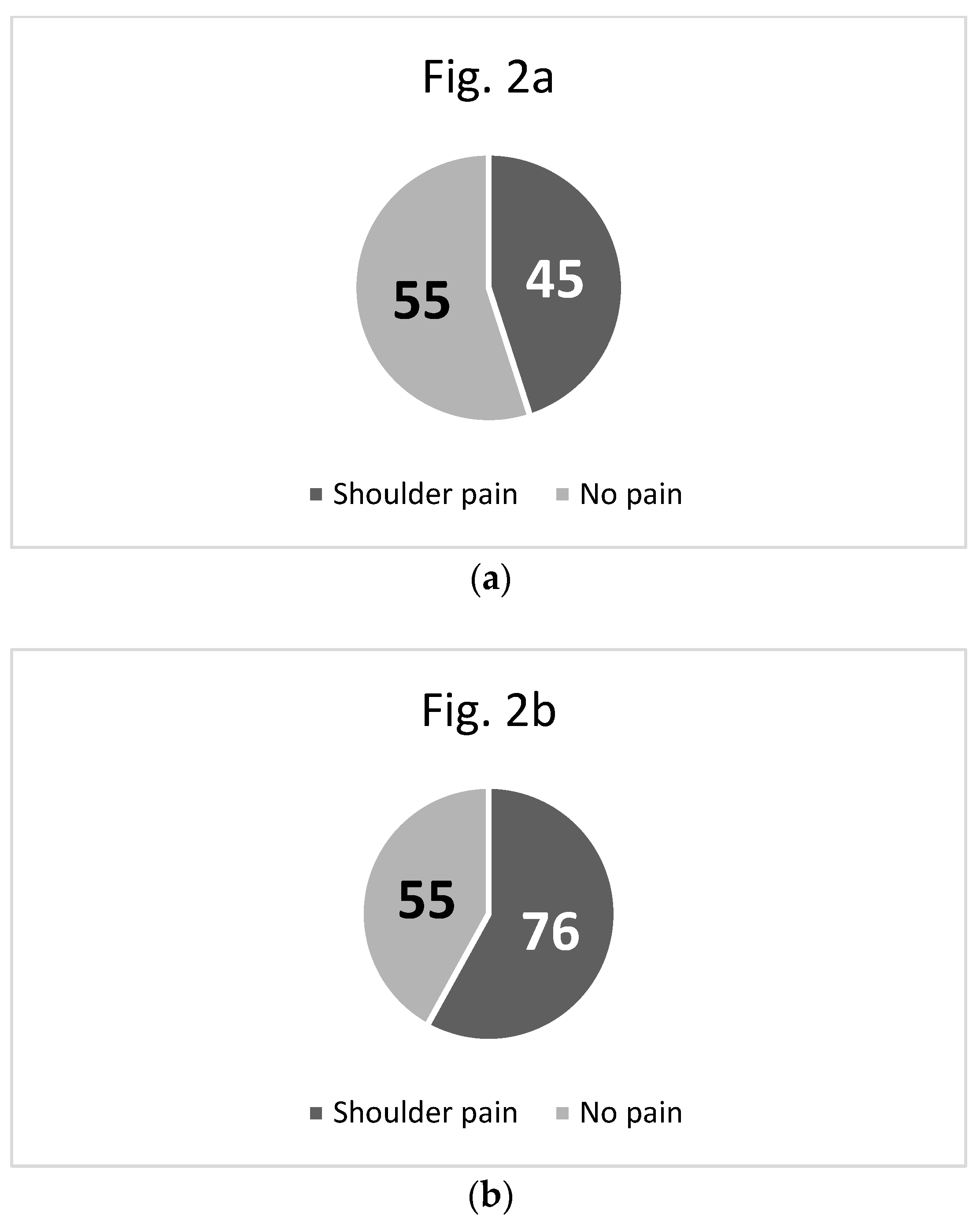
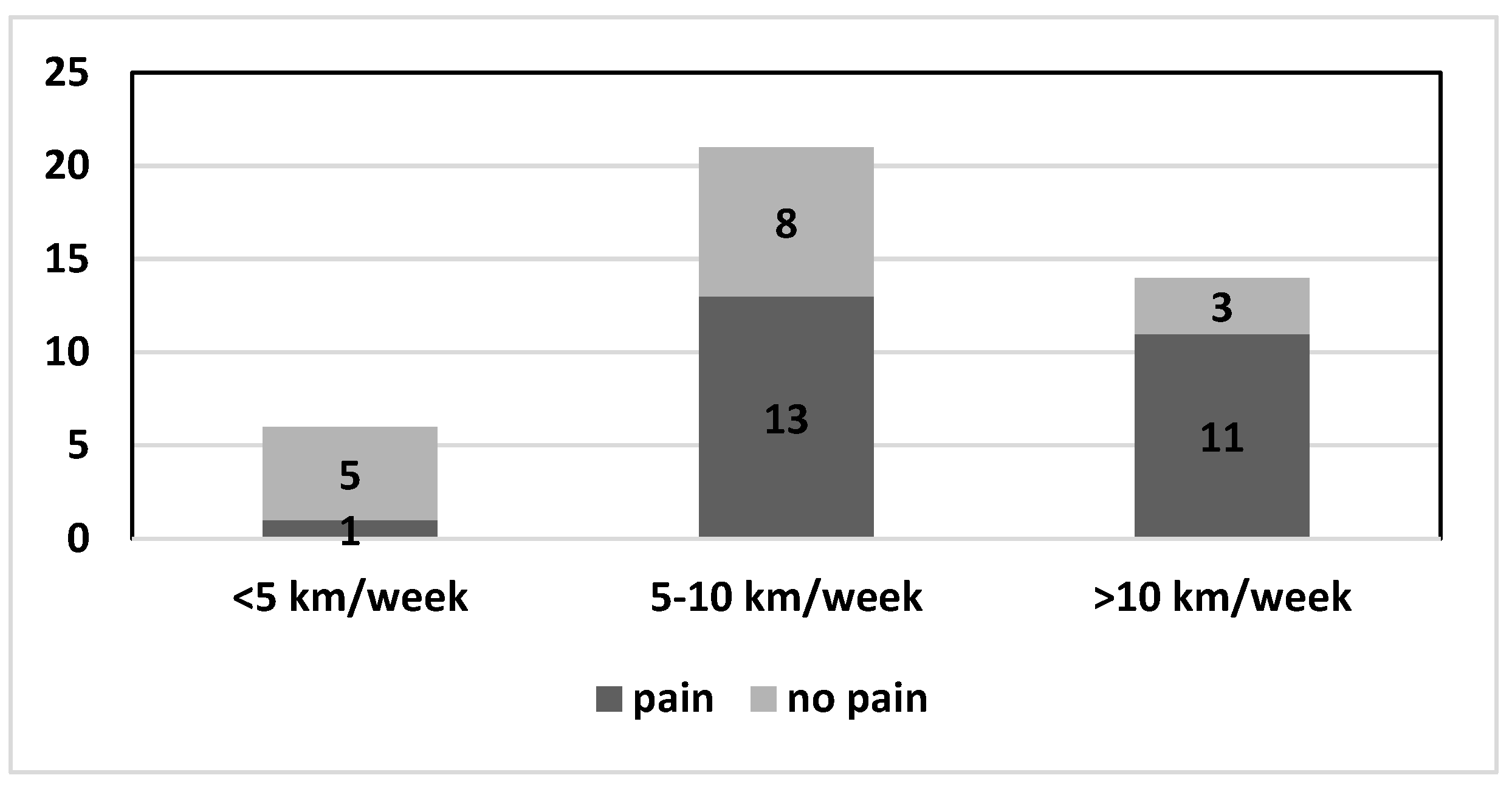
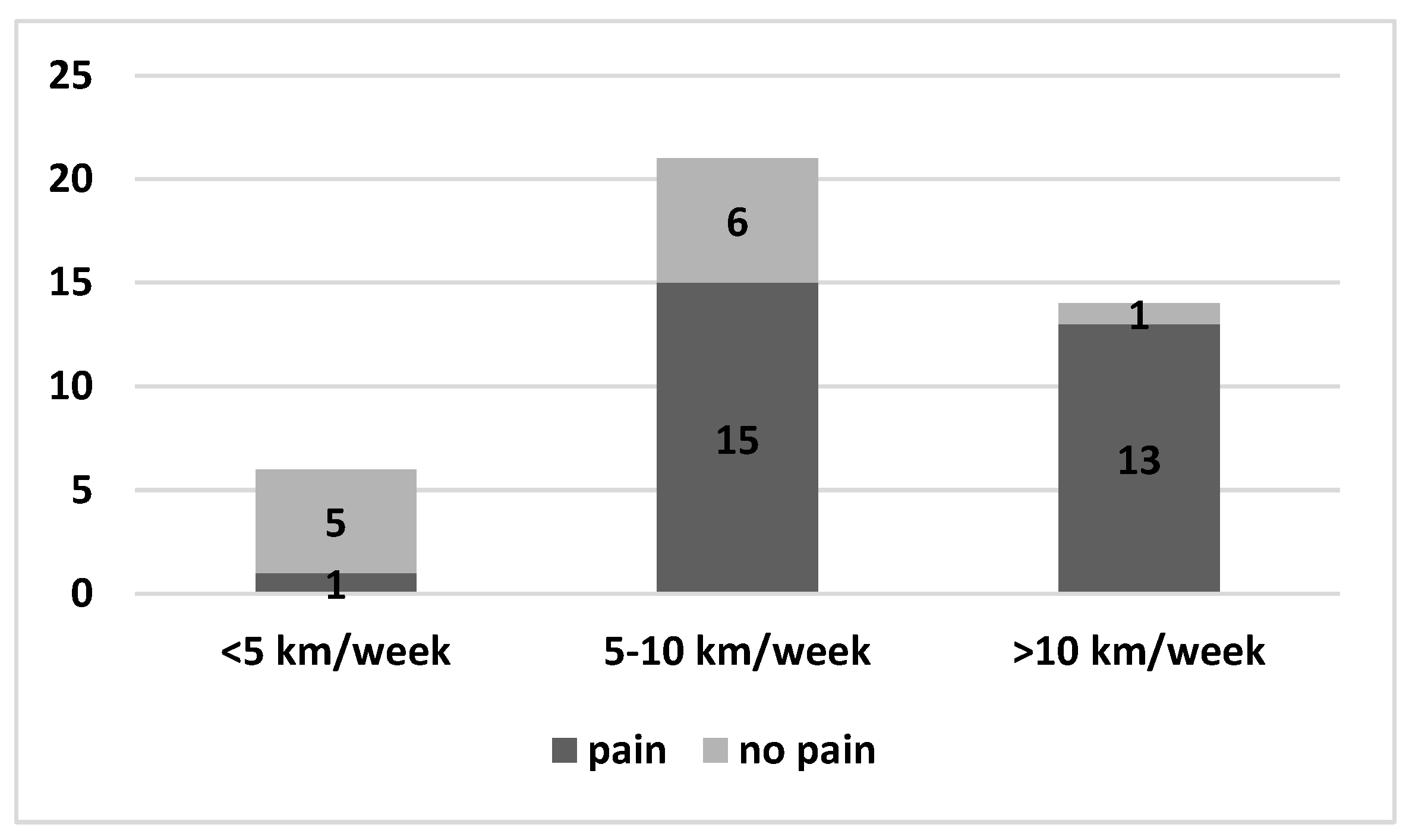
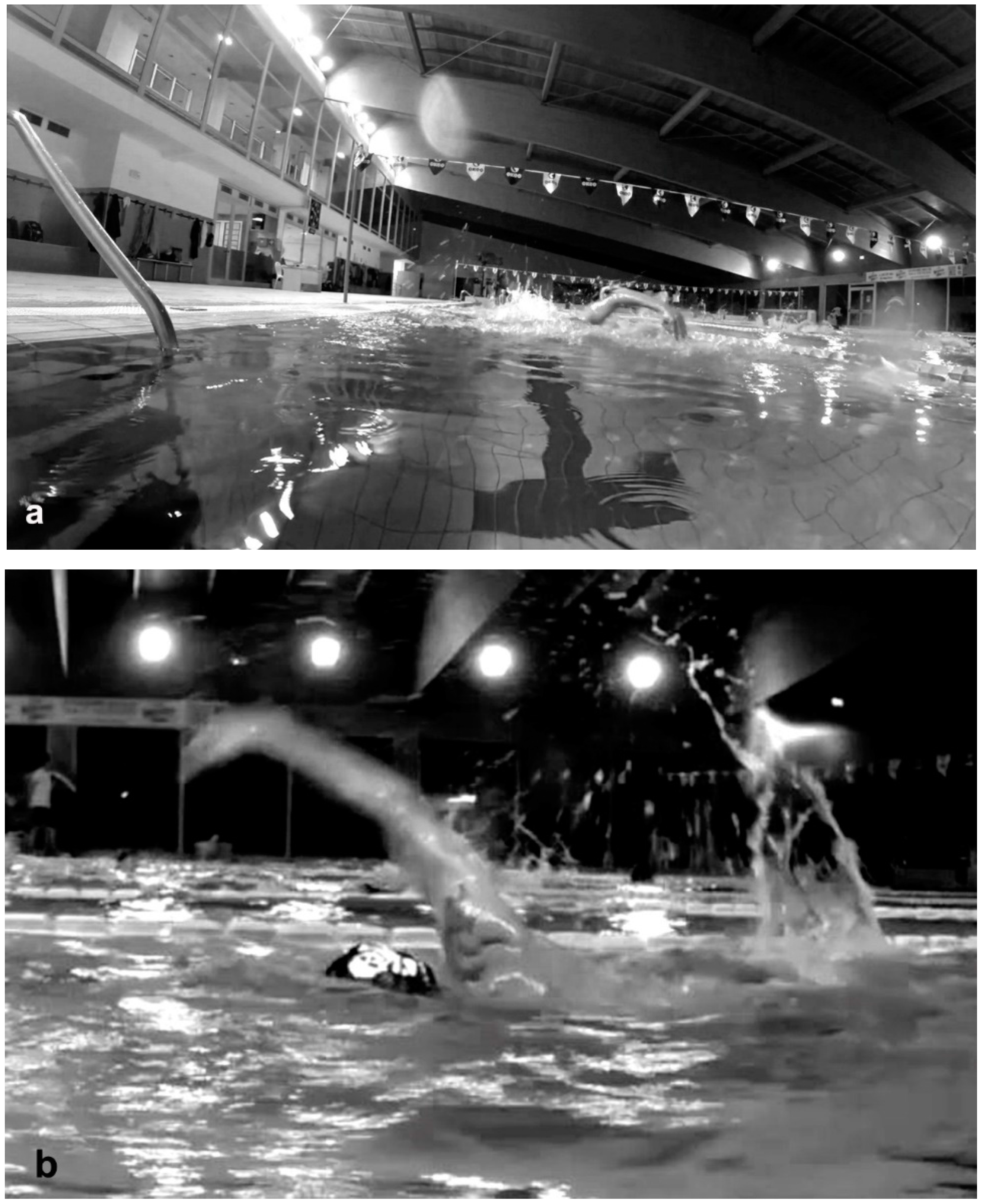
Disclaimer/Publisher’s Note: The statements, opinions and data contained in all publications are solely those of the individual author(s) and contributor(s) and not of MDPI and/or the editor(s). MDPI and/or the editor(s) disclaim responsibility for any injury to people or property resulting from any ideas, methods, instructions or products referred to in the content. |
© 2023 by the authors. Licensee MDPI, Basel, Switzerland. This article is an open access article distributed under the terms and conditions of the Creative Commons Attribution (CC BY) license (http://creativecommons.org/licenses/by/4.0/).



